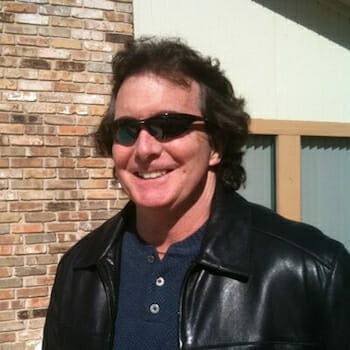Rock Hudson’s Most Challenging Role was Playing Rock Hudson
Actors earn a living thanks to their ability to perform in front of the camera (or a live audience) as someone else, making the audience believe they are a particular character of interest. But what happens when an actor must continue acting once the cameras stop rolling? Such was the life of Roy Harold Fitzgerald, a man known worldwide as Rock Hudson. Documentarian Stephen Kijak chronicles the complications faced by Rock Hudson – maintaining the All-American public persona, while hiding a personal life that likely would have ended his career had his secret life as a gay man been publicized.
Perhaps the biggest surprise here is that the secret was kept for decades, even though so many in the industry were well aware. Not only did Rock Hudson have incredible appeal to both men and women, he was also an extraordinarily nice man; a matinee idol with the personality of Tom Hanks. Of course, here we are almost 40 years later, and Rock Hudson’s legacy is often boiled down to the fact that he was the first true celebrity to go public with his AIDS diagnosis, ultimately passing away from the disease in 1985 at the age of 59.
As is often the case, there is much more to the man than the headlines. After serving in the Navy during WWII, it was 1946 when he headed to Hollywood. There he met Ken Lodge, who helped him get his start. It was industry big-wig Henry Wilson who thought ‘Roy Fitzgerald’ was a pleasant enough name, but “Rock Hudson” was much better. And it was Wilson who molded Hudson into the ‘ladies’ man’ Adonis we grew accustomed to seeing on screen. Wilson even taught him how to come across as “hetero,” and stressed the importance of not being photographed with his ‘friends’ while in public. We even hear candid interviews from George Nader and Mark Miller who were very close friends of Hudson’s, and we understand how “The Castle” became the hangout to avoid public scrutiny.
Director Kijak is very clever in his use of archival movie clips that now can be interpreted much differently than when Hudson’s movies first played. When clumped together like this, we wonder how the clues were missed, and just how intentional some of the dialogue and situations were. We hear from the doctor who diagnosed Hudson with AIDS, and the importance of Reagan politics in the era is emphasized. One of the most heart-wrenching sequences revolves around the Dynasty episode where Hudson, knowing he was infected with AIDS, had to kiss series star, Linda Evans. We also see how his long-time friends Doris Day and Elizabeth Taylor rallied around him when he went public.
Classic film lovers know Rock Hudson received his only Oscar nomination for Giant (1957), and it should be noted that his thirty-year career spanned just about every genre: Romcoms with Doris Day (Pillow Talk, 1959); dramas (All That Heaven Allows, 1955); war (A Gathering of Eagles, 1963); Westerns (Bend of the River, 1952); mystery (The Mirror Crack’d, 1980); sexploitation (Pretty Maids All in a Row, 1971); and action (Ice Station Zebra, 1968). He also starred alongside Susan Saint James and Nancy Walker in one of my favorite TV series from the 1970s, McMillan & Wife. Yet, despite so many terrific performances, shows, and films, Rock Hudson’s most challenging and impressive role was certainly that of Rock Hudson.

